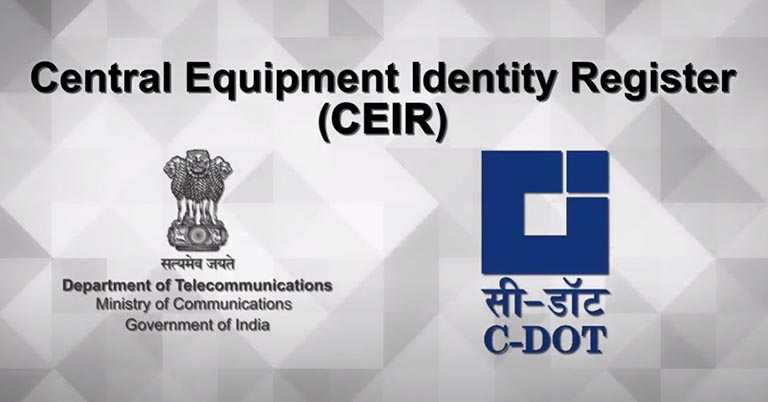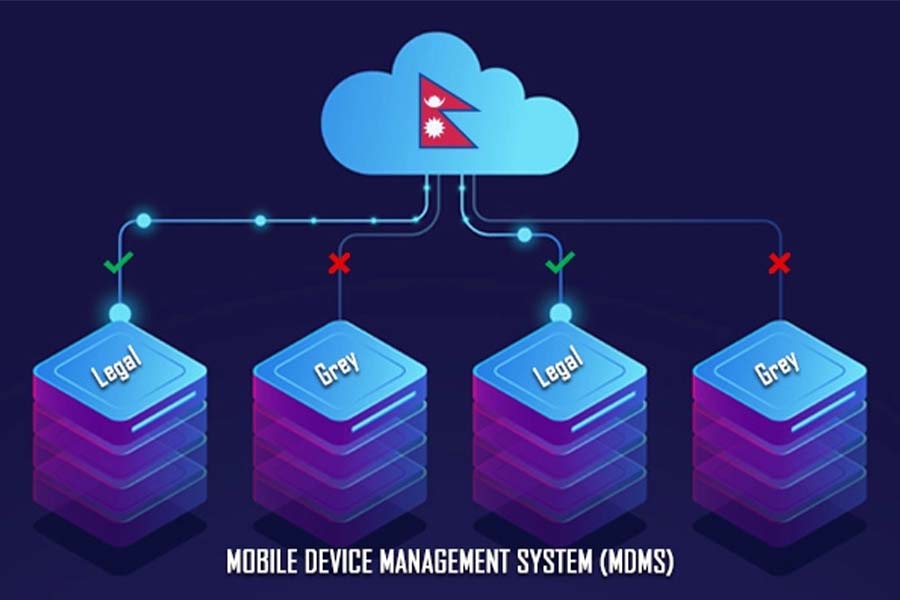
India’s Department of Telecommunications (DoT) has launched the “Central Equipment Identity Register (CEIR)” system for tracking and blocking lost mobile phones all across the country. In theory, it is pretty similar to Nepal’s MDMS, but its execution seems to be way better.
CEIR Mobile Tracking System Overview:
Planned for an all-India rollout on May 17, CEIR is a portal via which people can report their stolen phones, either for tracking or blocking them. It works on the basis of the IMEI (International Mobile Equipment Identification) number, which is a unique 15-digit number for every smartphone.
Indian law mandates all smartphones imported/sold in India to have visible IMEI numbers. All phones bought in India will have their IMEI numbers marked on the box as well as on the purchase bill. The DoT then stores all these IMEI numbers in robust central databases. So when you register a complaint via the CEIR portal or the police, they blacklist the IMEI of the stolen device. Since all telecom companies have access to this database, they can block service and start tracking your phone too.

Besides theft, another big problem in the Indian smartphone market is the existence of cloned, inferior devices. At a quick glance, they look very similar to the real deal, but that couldn’t be further from the truth once you actually got to use the phone.
However, with the introduction of this system, Indian smartphone buyers can check the IMEI status of a phone by simply sending an SMS to “14422”, by typing in:
- KYM<15-digit IMEI number>
If the status reads “Black listed”, “Duplicate”, or “Already in use”, then don’t buy those phones as they might be a clone, a stolen device, or one with an altered IMEI number. Alternatively, you can also verify all this via the KYM web portal or mobile app.
How does it work?
Say your phone got stolen. You’ll first need to file a complaint to the nearest police and acquire a digital copy of the complaint. Then, you’re gonna need to reach out to your network provider for a duplicate SIM since it will serve as your primary number to receive the OTP for verification when requesting to block your lost phone.
Now, you’re ready to fill out this form in CEIR’s mobile tracking portal and get a request ID. Make sure you enter all the details accurately, including your phone’s IMEI number and other personal information. You’ll also need to upload a few documents like that digital copy of the police complaint, purchase invoice, and such. And say the police track down your stolen smartphone, you can then request an appeal to unblock your IMEI number, which is where the aforementioned request ID comes in.
Recovering a lost smartphone via the installed SIM is a pretty common procedure. But it is bypassable by simply replacing the SIM card; whereas skilled thieves can even alter the IMEI number of the device using special software. iPhones have a “Find my iPhone” feature which works by tying the phone to a specific Apple ID, although Android phones have been lacking in this area. But with the introduction of the CEIR, all phones will have equal chances of recoverability in India.
Similarity to MDMS in Nepal

Essentially, CEIR is pretty identical to Nepal’s Mobile Device Management System (MDMS) which keeps a record of all cellular devices imported into Nepal using their IMEI numbers. And like CEIR, MDMS also has provisions to track and block stolen or lost phones. But seeing just how robust and clear-cut CEIR is, we can’t help but feel a bit disappointed by how MDMS has been so far.
First, there was this whole fiasco with the system’s implementation itself. And even after MDMS has finally gone live this time, we’ve heard of numerous complaints from others about its apparent unreliability. From occasionally flagging officially imported phones as “unverified” to the system’s uptime and more, NTA has a lot of work cut out for itself in terms of evolving MDMS into what it actually should be.
- Also Read:
- Nepal can learn from India’s new AI spam call filtering system
- Forget about MDMS, Laptop Device Management System is what Nepal needs
CEIR mobile tracking system: Final thoughts
In its pilot testing phase in the northeast, Delhi, Maharastra, and Karnataka region of India, CEIR has already proven to be quite effective. Karnataka Police reports it has already recovered more than 2,500 lost phones using this system. Whereas according to the CEIR portal’s latest data, the system has blocked 487,923 phones and traced 245,177 phones across India as of May 18, 2023.
Needless to say, systems like CEIR and MDMS have lots of benefits for smartphone owners, as well as the regulators of the mobile industry. It offers an additional layer of security to smartphone owners, while also effectively getting rid of the sale of grey devices.
- Meanwhile, check out our top picks for best phones under USD 300







![Best Gaming Laptops in Nepal Under Rs. 250,000 (रु 2.5 Lakhs) [2025] Best Gaming Laptops Under 2.5 lakhs in Nepal [Feb 2025 Update]](https://cdn.gadgetbytenepal.com/wp-content/uploads/2025/02/Best-Gaming-Laptops-Under-2.5-lakhs-in-Nepal-Feb-2025-Update.jpg)
![Best Gaming Laptops in Nepal Under Rs. 120,000 (रु 1.2 Lakhs) [2025] Best Budget Gaming Laptops Under Rs 120000 in Nepal 2025 Update](https://cdn.gadgetbytenepal.com/wp-content/uploads/2025/05/Best-Budget-Gaming-Laptops-Under-Rs-120000-in-Nepal-2024-Update.jpg)
![Best Laptops Under Rs. 80,000 in Nepal [2025] Best Laptops Under 80,000 in Nepal March 2025 Update](https://cdn.gadgetbytenepal.com/wp-content/uploads/2025/03/Best-Laptops-Under-80000-in-Nepal-March-2025-Update.jpg)
![Best Gaming Laptops in Nepal Under Rs. 200,000 (रु 2 Lakhs) [2025] Best gaming lapotp under 2 lakhs Nepal Feb 2025](https://cdn.gadgetbytenepal.com/wp-content/uploads/2025/01/Best-Gaming-Laptops-Under-2-Lakh-Nepal-Feb-2025-Update.jpg)

![Best Mobile Phones Under Rs. 15,000 in Nepal [Updated 2025] Best Phones Under 15000 in Nepal 2024 Budget Smartphones Cheap Affordable](https://cdn.gadgetbytenepal.com/wp-content/uploads/2024/03/Best-Phones-Under-15000-in-Nepal-2024.jpg)
![Best Mobile Phones Under Rs. 20,000 in Nepal [Updated] Best Mobile Phones Under NPR 20000 in Nepal 2023 Updated Samsung Xiaomi Redmi POCO Realme Narzo Benco](https://cdn.gadgetbytenepal.com/wp-content/uploads/2024/01/Best-Phones-Under-20000-in-Nepal-2024.jpg)
![Best Mobile Phones Under Rs. 30,000 in Nepal [Updated 2025] Best Phones Under 30000 in Nepal](https://cdn.gadgetbytenepal.com/wp-content/uploads/2025/01/Best-Phones-Under-30000-in-Nepal.jpg)
![Best Mobile Phones Under Rs. 40,000 in Nepal [Updated 2025] Best Phones Under 40000 in Nepal 2024 Smartphones Mobile Midrange](https://cdn.gadgetbytenepal.com/wp-content/uploads/2024/02/Best-Phones-Under-40000-in-Nepal-2024.jpg)
![Best Mobile Phones Under Rs. 50,000 in Nepal [Updated 2025] Best Phones Under 50000 in Nepal](https://cdn.gadgetbytenepal.com/wp-content/uploads/2025/01/Best-Phones-Under-50000-in-Nepal.jpg)
![Best Flagship Smartphones To Buy In Nepal [Updated] Best flagship phone 2025](https://cdn.gadgetbytenepal.com/wp-content/uploads/2024/07/Best-Flagship-Phones-who-is-it-ft-1.jpg)